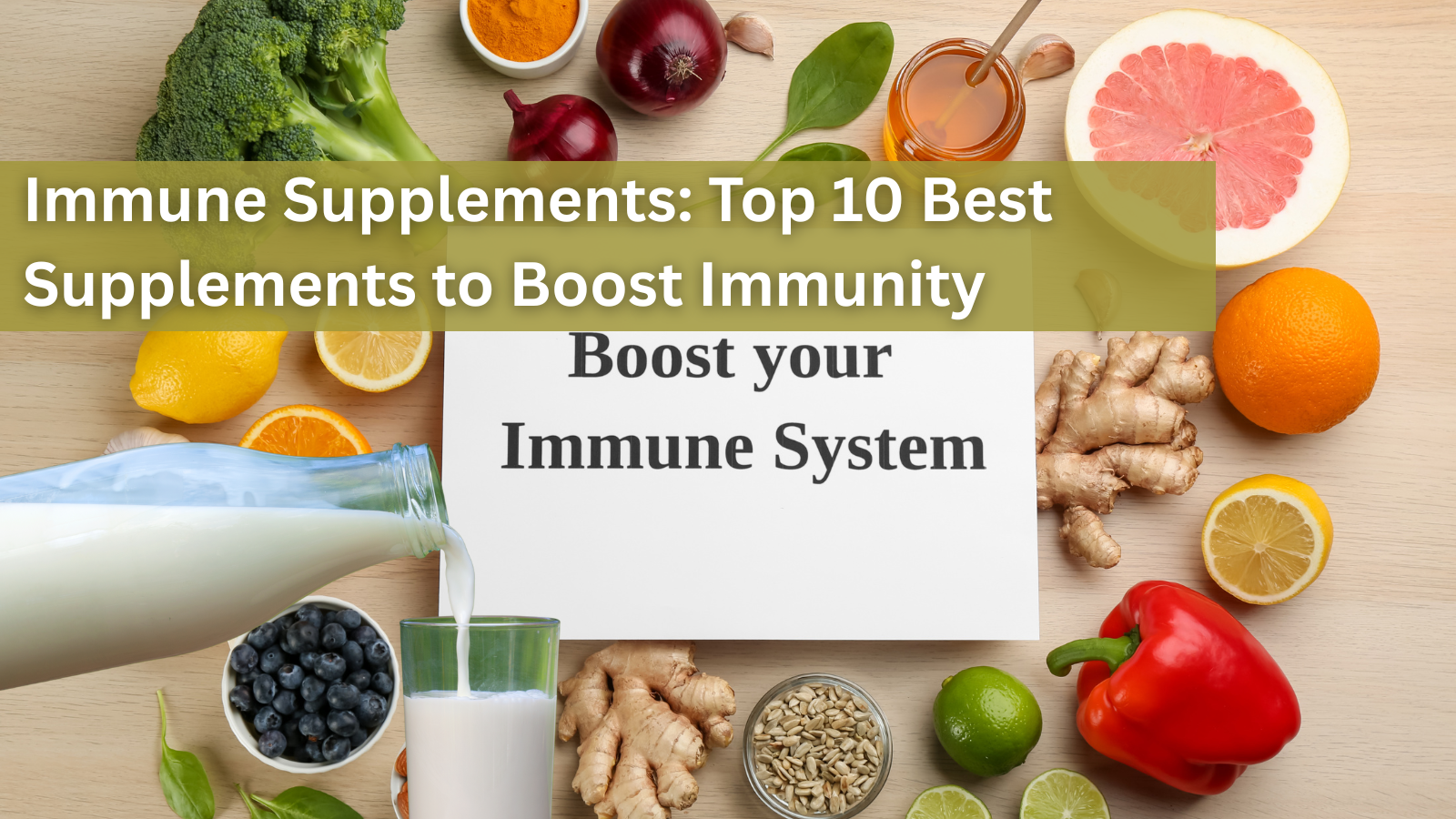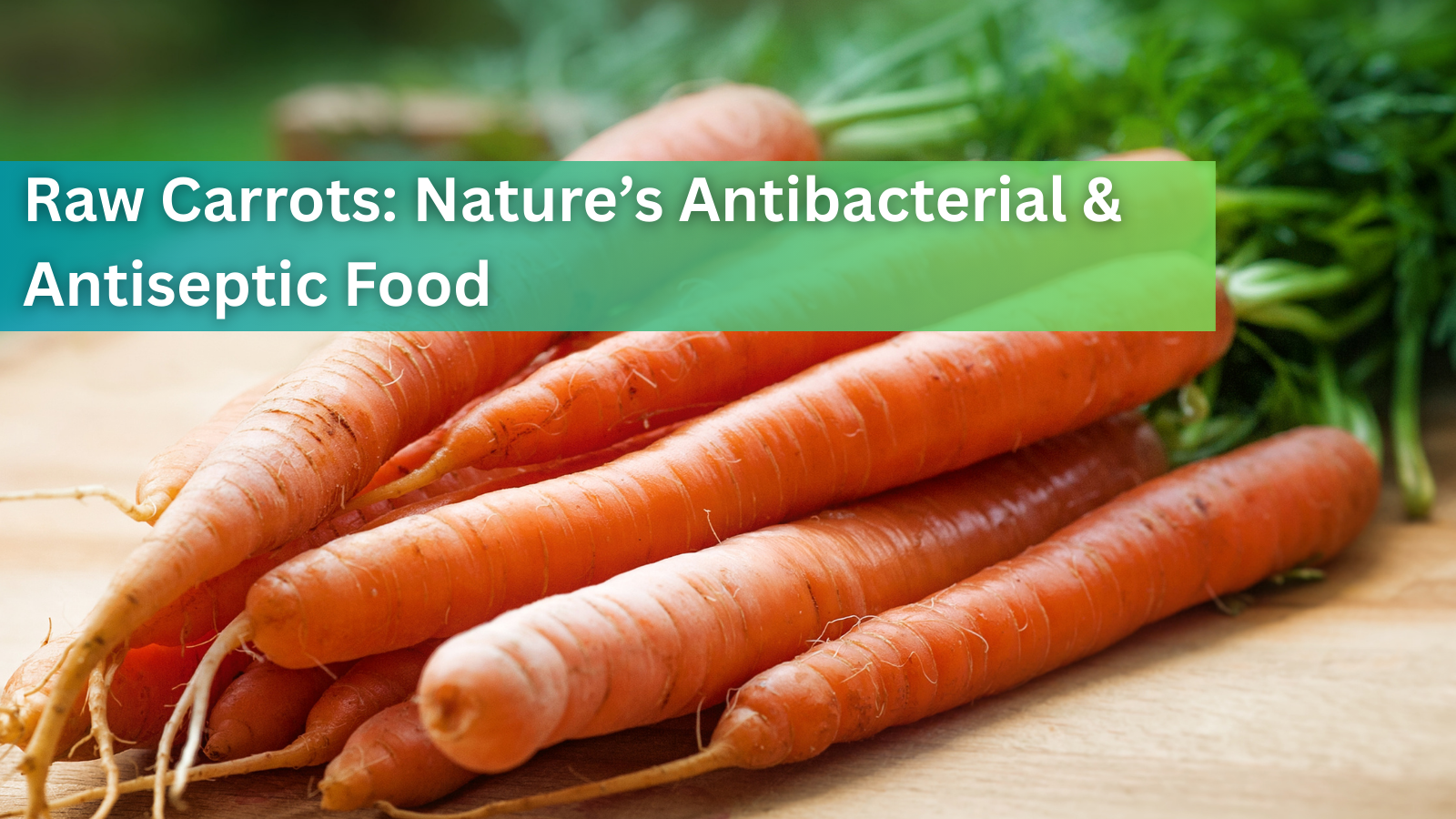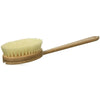Beyond Mistletoe Therapy – 5 Noteworthy Herbs in Cancer Support

-By Petra Sovcov
Petra Sovcov is a Clinical Herbalist with a Doctorate in Natural Medicine. She is not a Medical Doctor, or a Naturopath. The information supplied below is not meant as a replacement for allopathic medical care or as a replacement for prescription drug use and is intended for the purpose of education and information sharing only.
This article makes no statement of treatment or cure to any medical illness or ailment. As with all herbs and supplements, self dosing is not recommended, please work with a certified practitioner.
Dear Friends,
If you have an ear to the ground in holistic/herbal cancer support, you have no doubt heard of mistletoe (Viscum album) and the numerous clinical trials taking place with this cytotoxic (toxic to living cells, in this case – toxic to cancer cells) plant. In recent years we have seen the popularity of this plant soar as funding is made available for additional cancer research.
This is not the first time extensive clinical research in herbal medicine has happened. An excellent example took place in the early to mid 1960s with the use of the Pacific Yew tree (Taxus brevifolia). In 1964 the Research Triangle Institute (RTI), under the guidance of Dr. Wall and Mansukh Wani used constituents from this plant, which were later used to create pharmaceutical drugs used in the treatment of a variety of cancers.
As history often repeats itself, I foresee something to this effect likely taking place with Mistletoe as science continues to unravel what it considers to be the most promising “active ingredients” from this plant ally.
As a clinical herbalist supporting a variety of clients, it may be noteworthy to know that there are other herbs that may be readily available to those seeking help from our beautiful plant allies. I’ve never been one who believes in blanket formulations, but instead, see each person as a unique human with their own complex and complete story – what works to support one may not work for another. This is why having a variety of herbs at one’s disposal can often lead to more effective holistic support. In saying this, I wanted to share some of my favorites and some of the clinical research and traditional uses behind each wonderful plant.

Reishi Mushroom (Ganoderma lucidum) – This is an adaptogenic and immuno-modulating herb. Reishi has been used for thousands of years and has a long-standing history in traditional Japanese herbalism and traditional Chinese medicine. It is considered by most to be one of the oldest known medicinal mushrooms. One of the benefits of Reishi is that its adaptogenic properties helps the body adapt to stressors (such as the inflammatory long-term stress associated with chronic illness), and its immunomodulating activities, allowing it to help modulate immune responses up or down. This herb can be very useful to support individuals with low immune reaction, and in contrast can be used to support individuals with over-active immune responses as seen in autoimmune. This beautiful mushroom is also protective to the liver, is a powerful antioxidant, and has strong anti-tumor properties. In clinical research we have seen that it is potently protective when it comes to radiation exposure and the damages associated with this type of cancer treatment.

Cat’s Claw (Uncaria tomentosa) – Uncaria tomentosa has been used in Peru for over 2000 years but was first introduced to Europe in the 1990s as a natural supplement for AIDS and cancer. I was first introduced to the tremendous potential of Cat’s Claw in the early 2000’s and continue to work with it to this day.
Cat’s Claw is a woody vine native to the Amazon rainforest and other tropical regions of Central and South America. It is also found in areas like Mexico, Brazil, and northern Argentina. The name refers to the small, hook-like thorns that resemble a cat’s claw. This herb is ancient medicine and has a tremendously long history of use within many South American indigenous cultures. It’s not a plant to use lightly, but rather one that requires respect and gratitude for its abilities.
Though this is not a plant that has enough current in-depth clinical research, we know that it is highly anti-inflammatory, has the potential to help with Th1 inflammatory dominance, and has high potential for being anti-mutagenic (against cancer cell mutation) and anti-angiogenic (In the context of cancer, anti-angiogenic agents are used to starve tumors by blocking the growth of blood vessels that supply nutrients and oxygen) activity. We also know that it has potent immune-stimulating action and is a strong antioxidant.
Another promising activity of Cat’s Claw is its ability to potentially regulate proper cellular apoptosis (natural cell death) which was revealed through caspases activation (a crucial step in programmed cell death/apoptosis and inflammation, involving the conversion of inactive caspase precursors (zymogens) into active proteases), down-regulation of Bcl-X(L), up-regulation of Bax, and cytochrome c release.
Lastly, it is a highly utilized herb in South American folk medicine for breast cancer. Studies now reveal that its bark’s extract affect the growth of breast cancer cell lines (MCF-7) through anti-proliferative action on cancer cell lines (MCF-7). It is also reported that Cat’s Claw contains anti-proliferative alkaloids such as pteropodine, uncarine, oxindole, and isopterpodine which are responsible for causing apoptosis (cellular death).

All-Heal (Prunella vulgaris) - also known as Self-Heal, or Heals-All, is considered an invasive weed that is happy to take over your lawn. Here in the Pacific Northwest, it grows in abundance during the summer months. It is native to Europe and Asia, where it has long been used in traditional herbal medicine. The classic authors once considered this herb to be one of the best and most reliable wound healers due to its ability to stop bleeding and increase cellular granulation.
This herb is no stranger to even the most basic community herbalist and holds generations of use in both Western Herbalism and Traditional Chinese Medicine where it is referred to as Xia Ku Cao, meaning “Summer Dry Herb”. With its incredible ability to heal wounds, modern research has also found it to have the potential to be anti-angiogenic against cancerous tumors, a powerful antioxidant, an innate immune modulator, liver restorative, and a potent systemic tonic that supports immune restoration.
In modern clinical research we have seen that Prunella vulgaris has the potential to inhibit metastasis and promote the apoptosis of many kinds of tumor cells through different pathways. Triterpene compounds 2α-hydroxy ursolic acid and ursolic acid significantly inhibit breast cancer cells MCF-7, MDA-MB-231 and normal breast cells MCF-10A.
Betulinic acid (found in Prunella vulgaris) is reported to inhibit only breast cancer cells MCF-7 and MDA-MB-231 but has no effects on normal breast cells MCF-10. To further this, Betulinic acid is also able to cross the blood/brain barrier, giving this herb theoretic potential against brain tumors and brain cancer.

Black Walnut (Juglans nigra) – Not your common walnut, the black walnut is considered to be an anti-inflammatory powerhouse when it comes to natural support. It is the green hull surrounding the under ripe fruit of the black walnut tree that has great value. It is also what makes this support herb a “tough nut to crack”. The green fresh hull loses its medicinal value as it dries, meaning this herbal support ally needs to be harvested and tinctured from fresh components which is likely why a potent and clean extract can sometimes be hard to source.
As we know, cancer is considered an inflammatory disease, and chronic inflammation can sometimes lead to chronic inflammatory disease.
Research now reveals that black walnut contains at least 26 substances known to be anti-inflammatory in nature. These include flavanols, hydroxybenzoic acids, and ellagitannins.
Black walnut possesses compounds that exert an inhibitory effect on the secretion of six measured cytokines (TNF-α, IL-1β, IL-6, IL-8, IL-10, and MCP-1). Cytokines play vital roles in mediating pathological responses. TNF, IL-1, and IL-6 are pivotal cytokines in regulating innate and adaptive immune responses associated with disease onset and persistence, and TNF and IL-1 are signature innate cytokines in a variety of inflammatory diseases.
Green walnut and its extracts have also shown antitumor activity against glioblastoma and gastric cancer cells, among other types of cancer cells. The extract from walnut possesses high potential for anti-inflammatory and anticancer qualities.

American Paw-paw (Asimina triloba)- Some of us have heard of this herb, but most of us likely have not. Asimina triloba, or American Paw-paw is North America’s only native soft fruit. Native to the East Coast, it is a tree which bears a fruit resembling a mango in appearance. In herbal medicine, it is not commonly the fruit that is used, but rather the young sprouted green twigs which are harvested in the spring.
This powerful herbal ally holds tremendous potential (in my opinion) in our continued fight against cancer and is one that deserves extensive research. This plant is for the most part a mystery when it comes to allopathic clinical research, but we have quite a bit of traditional knowledge on its uses.
The pawpaw tree has several beneficial effects. However, no official clinical studies have been conducted to address the mechanisms underlying the cytotoxic effects of pawpaw extracts against cancer cells, and no study has investigated the anti-inflammatory effects. Despite this, some recent research shows us that findings indicate that pawpaw extracts are natural therapeutic agents that may be used for the prevention and treatment of gastric and cervical cancers and encourage further studies on the anti-inflammatory potential of the pawpaw tree.
Products that contain twig extracts of pawpaw (Asimina triloba) are widely consumed anticancer alternative medicines. Pawpaw crude extract and purified acetogenins (from Asimina triloba) inhibited hypoxia-inducible factor-1 (HIF-1)-mediated hypoxic signaling pathways in tumor cells. In a recent study, both the extract and the purified acetogenins (from Asimina triloba) blocked the angiogenesis-stimulating activity of hypoxic T47D cells in vitro. Pawpaw extract and acetogenins inhibited HIF-1 activation by blocking the hypoxic induction of nuclear HIF-1α protein. The inhibition of HIF-1 activation was associated with the suppression of mitochondrial respiration. Thus, the inhibition of HIF-1 activation and hypoxic tumor angiogenesis constitutes a novel mechanism of action for these anticancer alternative medicines.
Indigenous healers, traditional herbalists, and many associated with holistic healing are well informed of Paw-paw and many have used it to support their clients.
Pawpaw fruit contains high concentrations of annonacin, which may be toxic to nerve cells. Therefore, chronic high dosage use should be avoided without the guidance of a trained professional, this reasoning can be applied to many of our stronger herbal allies. It is always best to work with a trained practitioner.
Though we visited five herbal allies associated with natural cancer support, there are many more herbs at our disposal. The beautiful thing about herbal medicine is that plants have primary and secondary actions, allowing a well-versed herbal practitioner to be as specific and individual as their client when it comes to herbal formulation.
Unlike many umbrella products and protocols, formulations from a trained clinical herbalist/natural medicine practitioner allow for the full holistic support of the individual – as each client is not their disease, but an individual who deserves to be heard, validated, and supported in the full scope of mind, body, and spirit.
With love and healing from the plant world,
Petra Sovcov
Clinical Herbal Practitioner
Doctorate of Natural Medicine
Bio:

Petra Sovcov is a Clinical Herbal Therapist who holds a Doctorate in Natural Medicine, awarded by the Examining Board of Natural Medicine Practitioners of Canada. She is in beautiful British Columbia, Canada and is the owner of Healing House Natural Wellness.
Petra is a graduate of Dominion Herbal College (North America’s oldest Herbal Medicine College) where she received high commendations for her research on H-pylori and its connection to inflammatory diseases, specifically various cancers of the gastro-intestinal tract. Petra is passionate about facilitating an individual’s path and enjoys enriching a person’s core wellness with the use of herbs, supplements, dietary, and lifestyle modifications. Her special interest focus is on chronic inflammatory conditions/diseases such a cancer and auto-immune disease.
Ms. Sovcov was a recent Keynote speaker at the Annie Appleseed Convention in Florida and has appeared as a speaker with the Believe Big podcast. She serves as Chair on the Board of Directors with Herbalists Without Borders International and is a long-time staff member for multiple natural health colleges in BC. Petra is a survivor/thriver of an auto-immune disease and, like many of her clients, has walked the journey of cancer. When she is not seeing clients or teaching, she is an avid gardener and writer (she is currently working on a book about herbal medicine for Medical Doctors – but don’t tell anyone!) and enjoys a quiet life with her son.
If you have questions about this article, or would like to contact Petra, kindly go to www.healinghouseherbal.com or email her directly at healinghouseherbal@gmail.com
References
- The Fungal Pharmacy The Complete Guide to Medicinal Mushrooms and Lichens of North America – By Robert Rogers, RH (AHG) – North Atlantic Books Berkeley, California 2011
- Herb Contraindications and Drug Interactions- By Francis Brinker N.D. -Eclectic Medical Publications 2001
- The Earthwise Herbal A Complete Guide to Old World Medicinal Plants - By Matthew Wood - North Atlantic Books Berkley, California 2008
- Bartram's Encyclopedia of Herbal Medicine -By Thomas Bartram - Constable and Robinson Ltd London 1998
- Medicinal Herbs Quick Reference Guide by Julieta Criollo DNM, CHT - Self Published, Revision Three
- Dominion Herbal College Materia Medica - Dominion Herbal College Burnaby BC 2007
- Herbs for Health and Healing by Kathi Kevil – Rodale Press Inc. Emmause, Pennsylvania 1996
- Adaptogens in Medical Herbalism By Donald R. Yance, CN, MH, RH (AHG) – Healing Arts Press Rochester Vermont and Toronto Canada 2013
- A Modern Herbal by Mrs Grieve - Merchant Book Company Ltd West Molesey Surrey 1973
- Edible and Medicinal Plants of Canada - Lone Pine Publishing Edmonton AB, Canada 2009
- Holistic Cancer Care by Chanchal Cabrera - Storey Publishing North Adams MA USA 2023
- The New Holistic Herbal by David Hoffmann - Element Books Limited Rockport MA USA 1990
- Potter’s Herbal Cyclopaedia by Elizabeth M. Williamson - The C.W. Daniel Company Limited United Kingdom 2003
- Essential Guide to Natural Home Remedies by Penelope Ody - Kyle Cathie Limited Arlington Road London 2002
- Native American Medicinal Plants an Ethnobotanical Dictionary by Daniel E. Moerman - Timber Press Inc NY, NY USA 2009
- Medical Herbalism the Science and Practice of Herbal Medicine by David Hoffmann - Healing Arts Press Rochester Vermont USA 2003
- Herbal Formularies for Health Professionals Vol III Endocrinology by Dr. Jill Stansbury ND - Chelsea Green Publishing White River Junction, Vermont USA 2018
- Science Direct - Uncaria tomentosa: Plant-derived medicines for treatment of endometriosis: A comprehensive review of molecular mechanisms
https://www.sciencedirect.com/topics/pharmacology-toxicology-and-pharmaceutical-science/uncaria-tomentosa - National Library of Medicine - Cytotoxic effect of different Uncaria tomentosa (cat’s claw) extracts, fractions on normal and cancer cells: a systematic review
https://pmc.ncbi.nlm.nih.gov/articles/PMC12116528/ - National Library of Medicine - Treatment with Uncaria tomentosa Promotes Apoptosis in B16-BL6 Mouse Melanoma Cells and Inhibits the Growth of B16-BL6 Tumours
https://pmc.ncbi.nlm.nih.gov/articles/PMC7922471/ - Safety and efficacy of Prunella vulgaris preparation in adjuvant treatment of thyroid nodules
https://pmc.ncbi.nlm.nih.gov/articles/PMC8519199/ -
Prunella vulgaris: A Comprehensive Review of Chemical Constituents, Pharmacological Effects and Clinical Applications
https://www.researchgate.net/publication/331717239_Prunella_vulgaris_A_Comprehensive_Review_of_Chemical_Constituents_Pharmacological_Effects_and_Clinical_Applications - Anti-Tumor Effects and Toxicity Reduction Mechanisms of Prunella vulgaris: A Comprehensive Review
https://pmc.ncbi.nlm.nih.gov/articles/PMC11052495/ - Innate Immune-Modulatory Activity of Prunella vulgaris in Thyrocytes Functions as a Potential Mechanism for Treating Hashimoto’s Thyroiditis https://pmc.ncbi.nlm.nih.gov/articles/PMC7701117/
- Black Walnut (Juglans nigra) Extracts Inhibit Proinflammatory Cytokine Production From Lipopolysaccharide-Stimulated Human Promonocytic Cell Line U-937
https://pmc.ncbi.nlm.nih.gov/articles/PMC6761373/ - Identifying Antibacterial Compounds in Black Walnuts (Juglans nigra) Using a Metabolomics Approach
https://pmc.ncbi.nlm.nih.gov/articles/PMC6316014/ - Global Perspectives on the Medicinal Implications of Green Walnut and Its Benefits: A Comprehensive Review
https://www.mdpi.com/2311-7524/10/5/433 - Quantification of Vitamins, Minerals, and Amino Acids in Black Walnut (Juglans nigra)
https://pmc.ncbi.nlm.nih.gov/articles/PMC9363771/ - An activated carbon from walnut shell for dynamic capture of high concentration gaseous iodine
https://www.sciencedirect.com/science/article/abs/pii/S1385894722058454?via%3Dihub - A Comprehensive Review on the Chemical Constituents and Functional Uses of Walnut (Juglans spp.) Husk
https://pmc.ncbi.nlm.nih.gov/articles/PMC6719079/ - The growth-inhibitory effects of pawpaw (Asimina triloba [L.] Dunal) roots, twigs, leaves, and fruit against human gastric (AGS) and cervical (HeLa) cancer cells and their anti-inflammatory activities
https://pubmed.ncbi.nlm.nih.gov/33630206/#:~:text=Background%3A%20The%20pawpaw%20tree%20has,investigated%20the%20anti%2Dinflammatory%20effects - The Alternative Medicine Pawpaw (Asimina triloba) and Its Acetogenin Constituents Suppress Tumor Angiogenesis via the HIF-1/VEGF Pathway
https://pmc.ncbi.nlm.nih.gov/articles/PMC2890309/ -
National Cancer Institute - A Story of Discovery: Natural Compound Helps Treat Breast and Ovarian Cancers
www.cancer.gov/research/progress/discovery/taxol
2 comments

September 27, 2025
Immune Supplements: Top 10 Best Supplements to Boost Immunity
Are you looking for effective ways to enhance your body’s natural defense? Immune supplements have become popular choices to support the immune system booster function, especially in times of increased illness risk. With so many products...
Read more
September 27, 2025
Cell Phone and WiFi Safety: How to Prevent and Treat EMF Damage and Electrosensitivity
Electrohypersensitivity (EHS), often called electrosensitivity, has been a polarizing and increasingly relevant issue over the past decade and a half. Since the number of people identifying with these symptoms continues to grow exponent...
Read more
September 27, 2025
Raw Carrots: Nature’s Antibacterial & Antiseptic Food
For most of us, carrots are simply a crunchy snack or a source of vitamin A. But according to researcher Ray Peat, PhD, raw carrots offer something more unusual: they act as a kind of natural antiseptic inside the gut, helping to contro...
Read more




Sacha Inchi (tree nut) hi in protein and other nutrients is also shown to slow down or stop tumors from growing.
Look up “Sacha Inchi study pdf” And all the studies will pop up
Pawpaw, another delicious pudding-like fruit similar in texture to sapote, guanabana or cherimoya, three tropical fruits, also very healing.
Leave a comment